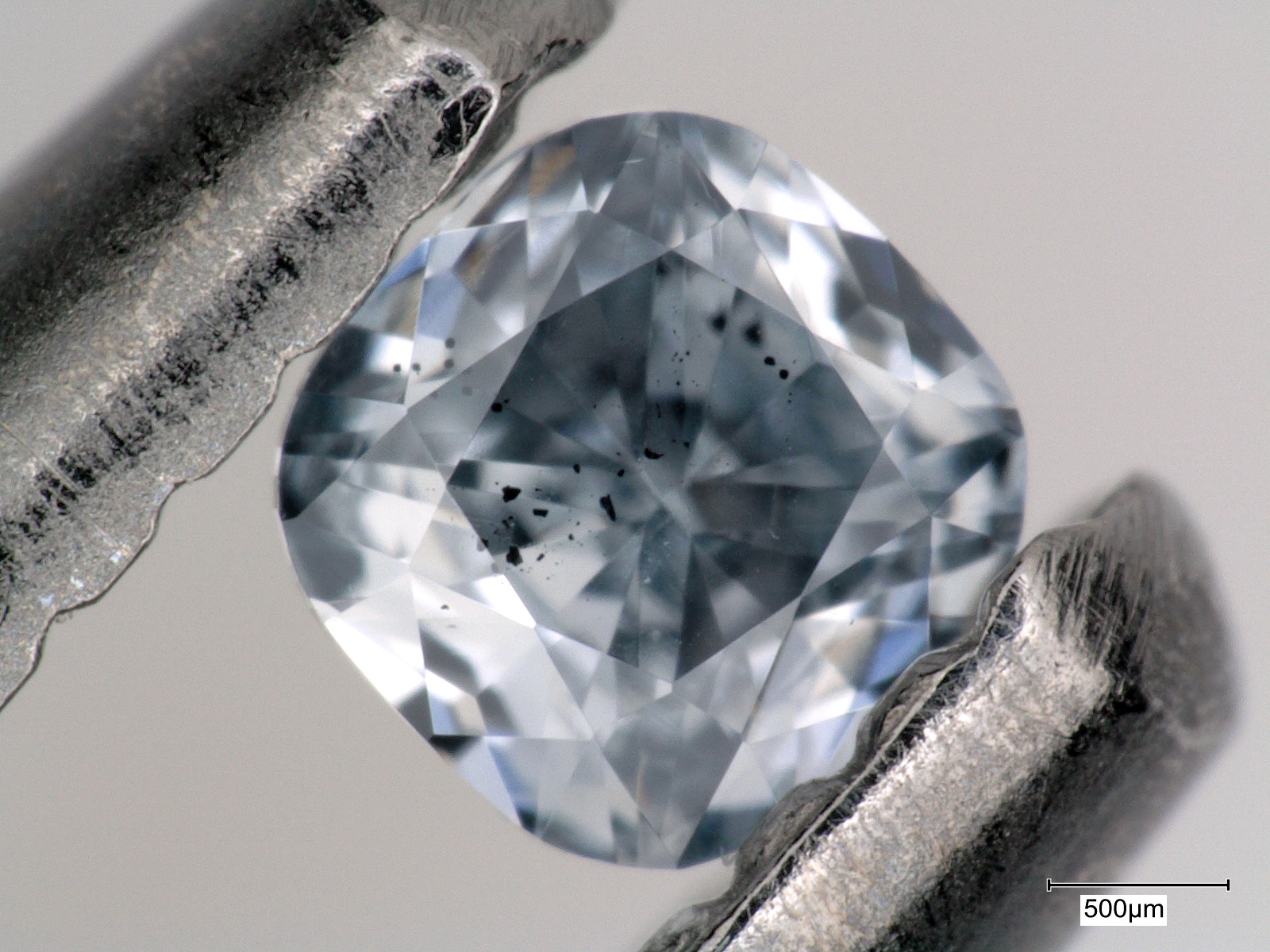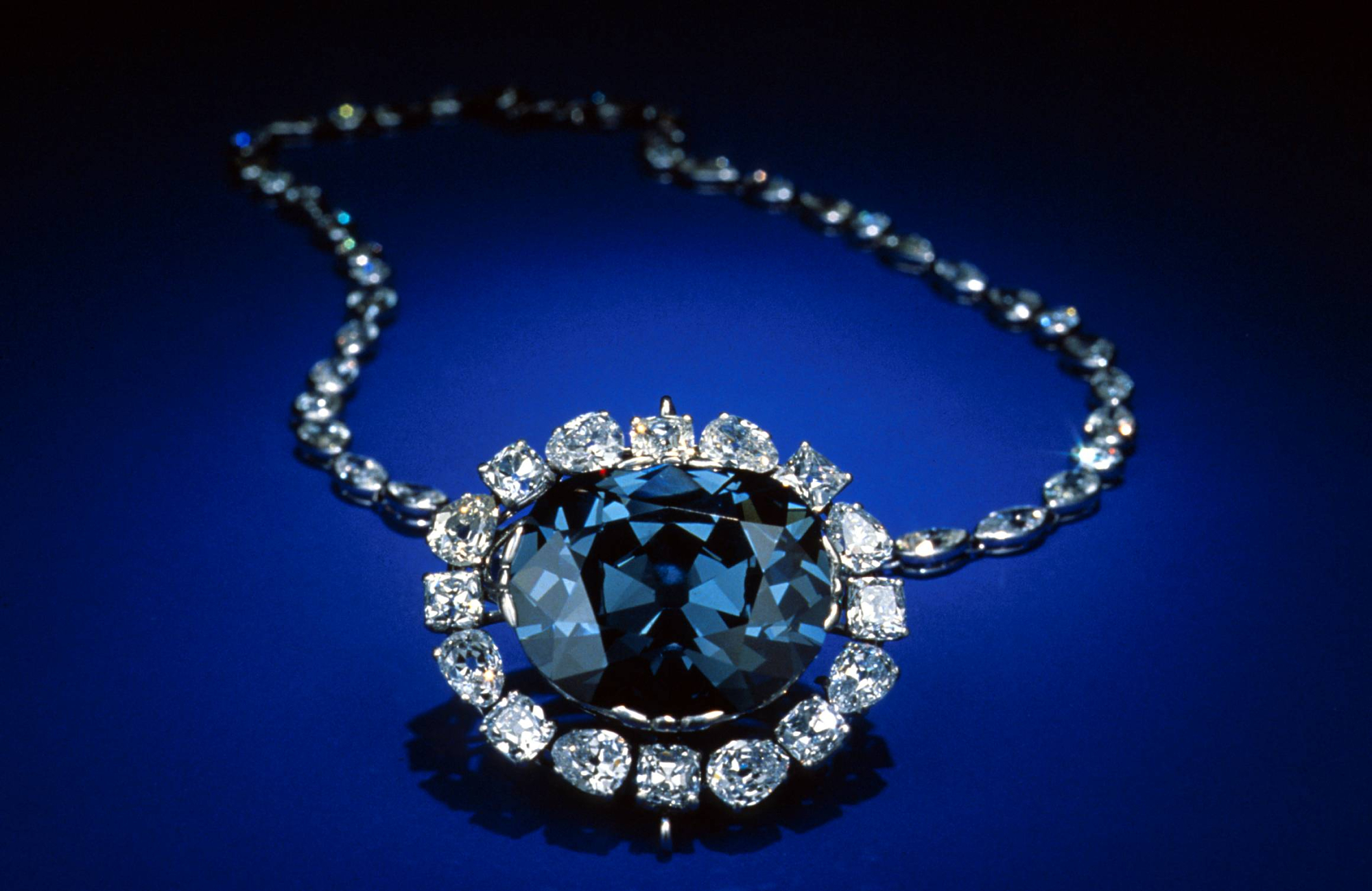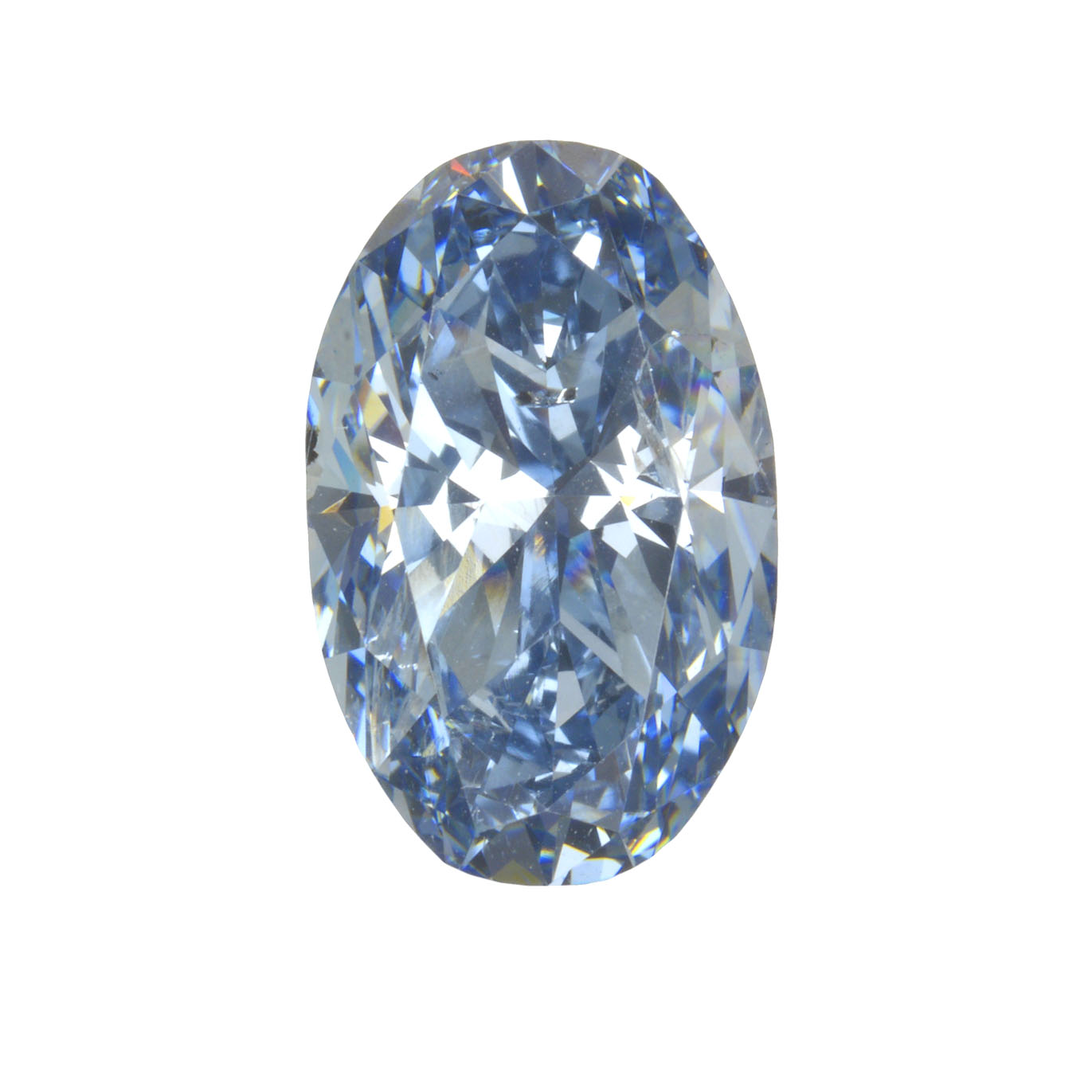The World's Deepest, Rarest Diamonds Revealed a Big Secret About Our Planet's Interior

If you want to see what the world's most famous diamonds looked like as babies, you'll have to rewind history by about a billion years.
Take a look at the stunning, possibly cursed Hope Diamond — the spectacular, blue, 45-carat stone that has sat on permanent display at the Smithsonian National Museum of Natural History since 1958 — and hit rewind. As the years spool backward, you'll see the brilliant blue diamond leave its museum pedestal and swiftly change hands, from merchants to socialites to thieves to King Louis XIV. Eventually, you'll see a French gem merchant return it to a mine in India, where it'll sit trapped in hardened lava for perhaps hundreds of thousands of years.
You'll see that rock melt back into smoldering magma, get sucked into an exploding volcano and shoved deep, deep into Earth's mantle where the diamond will slowly break apart into its constituent elements. Then, as millions of years pass like seconds, you'll see some of those elements rise hundreds of miles back to Earth's surface and rest at last on the bottom of the sea. [Gallery: 13 Mysterious and Cursed Gemstones]
This is where the story begins in an exciting new paper published today (Aug. 1) in the journal Nature. In a first-of-its-kind study, geological researchers from the United States, Italy and South Africa analyzed 46 of the world's most valuable diamonds to answer a simple question: How deep in the earth do precious blue diamonds form, and how do they get there? In investigating these questions, the researchers discovered that blue diamonds are not only some of the rarest and deepest diamonds on Earth, but they also might contain secrets about our planet's interior that science is only beginning to scratch the surface of.
The rarest rocks on Earth
Blue diamonds — or type IIb diamonds — are extremely rare. Barely one-hundredth of 1 percent of all mined diamonds fit into this classification, the study authors wrote. They're also extremely expensive.
"These so-called type IIb diamonds are tremendously valuable, making them hard to get access to for scientific research purposes," lead study author Evan Smith of the Gemological Institute of America said in a statement.
In the present study, Smith and his colleagues spent two years getting familiar with the world's most expensive blue diamonds, including the so-called Cullinan Dream, a 24.18-carat diamond that sold at auction for more than $23 million in 2016.
Get the world’s most fascinating discoveries delivered straight to your inbox.
The team screened hundreds of thousands of diamonds before picking their final lineup of glittering test subjects, ultimately choosing diamonds that showed clear inclusions — visible flecks of leftover minerals from the ancient, underground rocks in which the diamonds formed. By studying these inclusions carefully, researchers can estimate what sorts of minerals were in the rocks where the diamonds formed; the inclusions can also indicate where (approximately) in the Earth's crust those diamonds formed.
Using Raman spectroscopy (a method of scattering lasers over a target to determine its unique molecular composition), the team determined that the inclusions in their blue diamonds looked like rocks that could form only in Earth's lower mantle, about 250 miles to 410 miles (410 to 660 kilometers) below Earth's surface — about four times deeper than previously thought. By contrast, the researchers wrote, most other gem-quality diamonds emerge from about 90 miles to 125 miles (150 to 200 km) below ground. This makes blue diamonds not only some of the rarest, but also the deepest diamonds known on Earth.
"We now know that the finest gem-quality diamonds come from the farthest down in our planet," study co-author Steven Shirey, a researcher at the Carnegie Institution for Science in Washington D.C., said in the statement.
For the many of us who will never hold a blue diamond, there is an intriguing silver lining. These findings also suggest that our planet recycles its surface minerals much deeper into the mantle than previously thought.
Blue diamonds inherit their striking color from boron, an element found almost exclusively at Earth's surface and in underwater mineral deposits, the researchers wrote. To reach the staggering depths where blue diamonds are now thought to form, that boron probably rides Earth's dense oceanic crust underground when it collides with continental crust at subduction zones — places where two tectonic plates smash together, forcing the denser plate to sink under the less dense one.
Because some inclusions in the blue diamonds were also surrounded by pockets of hydrogen and methane, it's likely that whatever underwater mineral carried boron into the mantle also carried trace amounts of ocean water, too. This possibility highlights "a possible major pathway for ultra-deep water recycling on Earth," the researchers wrote.
To further hone this hypothesis, researchers will just have to study more of the world's shiniest, bluest diamonds. Never say science isn't glamorous.
Originally published on Live Science.

Brandon is the space / physics editor at Live Science. With more than 20 years of editorial experience, his writing has appeared in The Washington Post, Reader's Digest, CBS.com, the Richard Dawkins Foundation website and other outlets. He holds a bachelor's degree in creative writing from the University of Arizona, with minors in journalism and media arts. His interests include black holes, asteroids and comets, and the search for extraterrestrial life.




